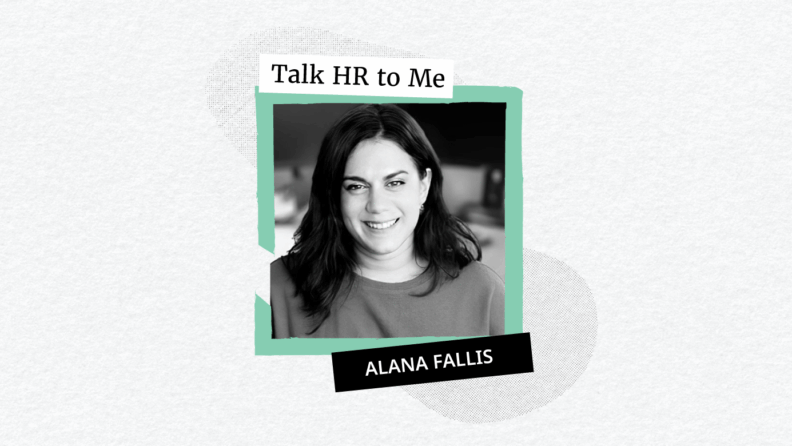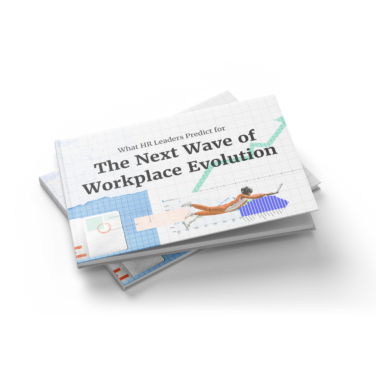Welcome to Talk HR to Me, a People Managing People advice column with Alana Fallis, VP, Head of People at Quantum Metric.
Every two weeks, Talk HR to Me digs into your pressing HR questions and provides advice that helps you navigate the stickiest of situations.
This week, she tackles a range of HR challenges submitted to us via our anonymous question form.
So, without further ado...
QUESTION 1
We're going through a big org change and redesign right now. Some of the change, it's difficult to tell how we're doing and where we are along that journey. Do you have a change management maturity model that you like? How can I help bring clarity to where we are in the journey?
Ooh, fun! Organizational change is some of the juicier work we get to do as HR practitioners- it's an opportunity to flex those strategic operator skills, and I for one love solving puzzles.
Below are the top 3 change maturity models, and the best applications in which to use them.
1. Prosci Change Management Maturity Model Framework - outlines 5 levels of organizational maturity in change management, best to use when you need to assess your organization's change capability (and when you need to build a case for investment).
2. ACMP’s Standard for Change Management - a framework that defines practices, processes, tasks and activities for sustainable change and can be adapted into a maturity framework. Best to use for aligning to a structured process alignment approach (PMP) or practitioners using formal certification.
3. Bridges' Transition Model of Change (more of a psychological approach, but can be adapted to a maturity model). Foundationally a transition model, this framework can be used to assess how well your organization supports individuals through the emotional journey of change, especially culture, mindset, and emotional readiness.
Although the above frameworks all have different best use cases, my advice is to take what works from each to suit your business, and focus on prioritizing an employee listening strategy.
- Identify the major personas impacted by this change, their level, management structure, and day-to-day experience.
- What are the highest needs according to each persona at each step of the process? What information is critical for them to know and when?
- Set up surveys (anonymous or otherwise) or focus groups with those personas. Ask targeted questions to get an understanding of where they are in the change process, and their overall perception of how things are going.
Good luck!
QUESTION 2
One of our employees found a co-worker on a dating app and told everyone they saw the colleague's profile. It's become an awkward topic of conversation for the employee with the profile on a few occasions that have come to my attention. However, they haven't come to me about it and don't want to turn it into a HR thing. What should I do?
Let me get this straight - an employee found a coworker on a dating app and is singing it from the rooftops? Side note, this would have been my worst nightmare in my 20s as a young woman in NYC who was starting her career and yearning to be taken seriously, but also wanted to find a way to meet people.
Connect with the "finder" employee one on one, and politely (and professionally) tell them to zip it. No need to broadcast another employee's business, who likely doesn't appreciate being gossiped about in the workplace.
This doesn't need to be an "HR thing", and can follow a talk track that is somewhat informal: "Hey, I overheard you talking about another team member's profile on a dating app, I'm asking you to keep that to yourself going forward. I'm sure many employees are on dating apps, yourself included, and some may not want to have that public or talked about in the workplace. Can you do that?"
Employees are bound to see each other out there in the wild at some point in time, so the question is how can you support them in cultivating a culture of discretion, respect, and professionalism?
QUESTION 3
How do you address a manager who’s amazing on paper, beloved by their superiors but is slowly draining the energy of their team without breaking a single policy?
Without more detail on how they are draining their team, I'd advise you to get specific on the thing you're asking them to do differently. It's "the gap" - what you expect to see vs. what you are seeing.
Once you can do that, find a way to sit down with this person 1:1 and provide them this feedback, include anything that's been shared with you such as feedback you've heard from others (while protecting confidentiality) that's supportive of your point.
A very simple rubric I use is "I know that your intent is x, but the unintended impact of what you're doing is y, and I know that's something you'd want to be aware of."
But first things first: define it and get specific about what they should be doing differently.
QUESTION 4
Someone’s cognitive style (e.g., neurodivergence or high pattern recognition) makes them outperform but also destabilize group cohesion, who gets protected: the team or the outlier?
You presented the options as the team vs the outlier, but I'm assuming you really mean "the team minus this outlier, vs. the outlier." To which I say: the team dynamic as a whole gets protected. Team effectiveness gets protected. There are a couple of things I suggest you do here:
- Run a session on team dynamics that can help you uncover optimal working styles and communication styles. I particularly love Predictive Index, which has helped my team land on the best ways of working as a group.
- Define swim lanes clearly. This team member may be overperforming, but is part of the tension that they are overperforming into someone else's domain? Clearly defining roles can help with this.
- Hopefully the above points work toward furthering trust, which you'll need for this last point. Develop a mechanism for people to raise their hands when something isn't working. Can we create a space to talk about it, so that team members can call out and collaborate if we get off track?
Refocus your direct reports on the goal here, which is that we play as a team.
QUESTION 5
A mid-level manager recently started using AI tools to draft team comms, performance reviews, and even parts of 1:1s. The content isn’t bad or negative, but the team feels something’s off, and I’ve received indirect feedback about a loss of authenticity and trust. They haven’t broken any rules. Do I step in? And how do I address this when the issue is emotional, not procedural?
The good news here is, this is low hanging fruit. It sounds like this feedback started as a direct result of the overuse of AI in this manager's work, and you can point to a correlation.
Start from the premise that your manager doesn't know their team feels this way, and that this isn't the kind of leader they want to be known as.
Share this feedback, and encourage them to re-read everything AI generates before sending to their employees, to make sure it sounds like themselves.
To start, you can even prompt (hehe) them to use AI for broad talking points, but encourage them to flesh out the content and specifics themselves. The goal is not to hide using AI in any of your team's work, but especially for things like feedback or performance reviews, employees still want to see the human side. Don't we all?
QUESTION 6
An employee has started bringing their therapy dog into the office a few days a week. They didn’t go through any formal accommodation process...it just sort of happened and no one said anything. Now a second employee has asked if they can bring in their dog “for emotional support too.” Leadership wants to be empathetic but consistent. How do we navigate this without alienating anyone or inviting a parade of pets?
My friend! What happened here? I suspect what happened is we avoided a difficult conversation and now we find ourselves in a pickle. First things first, read your office lease documents and understand the building's position on dogs.
Secondly, ask the first employee for an accommodation to bring their dog to work.
They may or may not qualify based on whether the dog is a service animal vs an emotional support animal, and you likely want to have legal counsel's support if you land in a gray area.
Lastly, what you will need is a company policy on bringing dogs into the office, so you have an equitable approach for all team members.
In the event this first (or second) employee does have a certified medical need to be accompanied by a service animal, you will likely need to allow them to bring the pup (unless it causes undue hardship to the business), but you can always work through a schedule where they alternate between working from home and coming to the office.
For what it's worth... in my experience, dog friendly offices almost never work out. Inevitably, at some point a new hire will come in with an allergy. Beware!
What's Next?
Want more advice like this? Be sure to subscribe to the People Managing People newsletter and follow the People Managing People podcast on whatever podcast listening platform you prefer. You'll get a steady stream of expert insights, candid interviews and useful tips to apply to your workplace.



